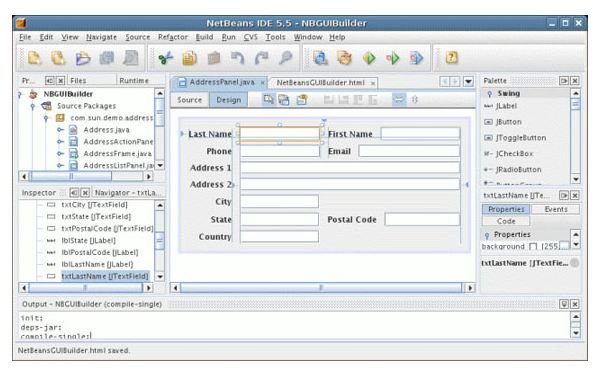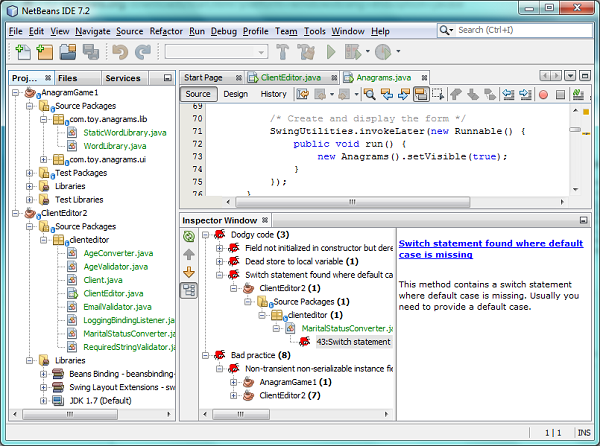

Org-netbeans-core-output2.jar org-openide-io.jar Provides the basic UI components provided by the NetBeans Platform, together with related infrastructure. Org-netbeans-core.jar org-netbeans-core-execution.jar org-netbeans-core-ui.jar org-netbeans-core-windows.jar Moduleīoot.jar core.jar org-openide-filesystems.jar org-openide-modules.jar org-openide-util.jar Items in red are mandatory, items in green are optional. The complete list of NetBeans Platform modules is provided below. You also do not need to have a user interface, meaning that you can create server/console applications on the NetBeans Platform. The NetBeans Platform consists of a large set of modules. You can also bind help topics to UI components to create a context-sensitive help system for your application. You can create help sets in each of your modules and the NetBeans Platform will automatically resolve them into a single helpset. The JavaHelp API is an integral part of the NetBeans Platform. In addition to a window system, the NetBeans Platform provides many other UI-related components, such as a property sheet, a palette, wizards, complex Swing components for presenting data, a Plugin Manager, and an Output window. The NetBeans Explorer & Property Sheet API provides several advanced Swing components for displaying Nodes.

The NetBeans Nodes API provides a generic model for presenting your data. Switching between them means rewriting the model. With the NetBeans Platform, you're not constrained by one of the typical pain points in Swing: the JTree model is completely different than the JList model, even though they present the same data. A related benefit is that you can change look & feels very easily, and add internationalization and Java 2D effects to your applications Swing is the standard UI toolkit and is the basis of all NetBeans Platform applications. The NetBeans window system lets you maximize/minimize, dock/undock, and drag-and-drop windows, without you providing the code.
#NETBEANS PLATEFORM WINDOWS#
Coding good interaction between multiple windows is not a trivial task. Most serious applications need more than one window. Unified API providing stream-oriented access to flat and hierarchical structures, such as disk-based files on local or remote servers, memory-based files and even XML documents. The NetBeans Platform provides an infrastructure for registering and retrieving service implementations, enabling you to minimize direct dependencies between individual modules and enabling a loosely coupled architecture with high cohesion and low coupling.
#NETBEANS PLATEFORM HOW TO#
Application servers understand how to compose web modules, EJB modules, and so on, into a single web application, just as the NetBeans runtime container understands how to compose NetBeans modules into a single Swing application.Įnd users of the application benefit because they are able to install modules into their running applications via an update center, since NetBeans modules can be installed, uninstalled, activated, and deactivated at runtime. Just as application servers such as GlassFish provide lifecycle services to web applications, the NetBeans runtime container provides services to Swing applications. This strict organization is of particular relevance to large applications developed by engineers in distributed environments, during the development as well as the maintenance of their shared codebase.
#NETBEANS PLATEFORM CODE#
Only modules that have explicitly declared dependencies on each other are able to use code from each other's exposed packages. Modularity offers a solution to 'JAR hell' by letting you organize code into strictly separated and versioned modules. The following are the main features of the NetBeans Platform, showing you the benefits of using it rather than your homegrown Swing framework.


 0 kommentar(er)
0 kommentar(er)
